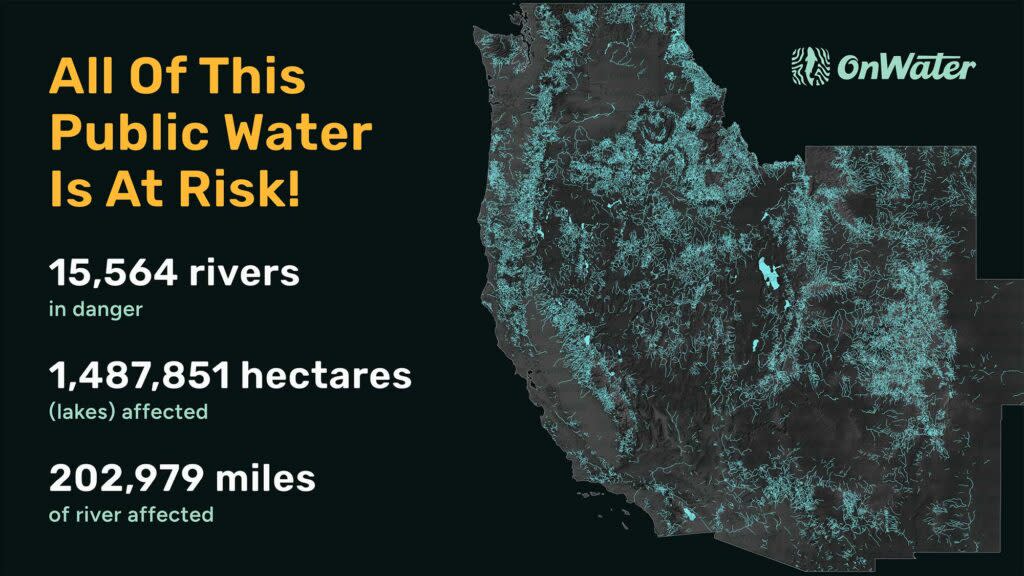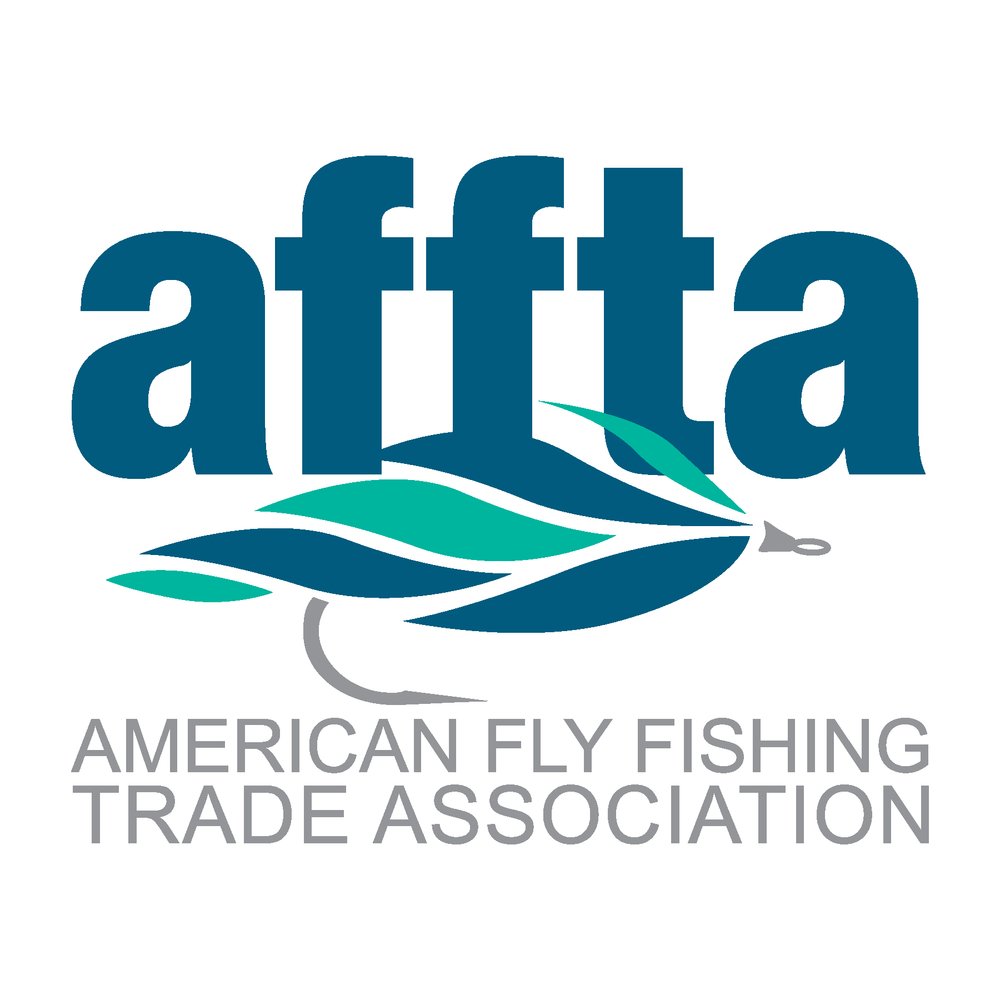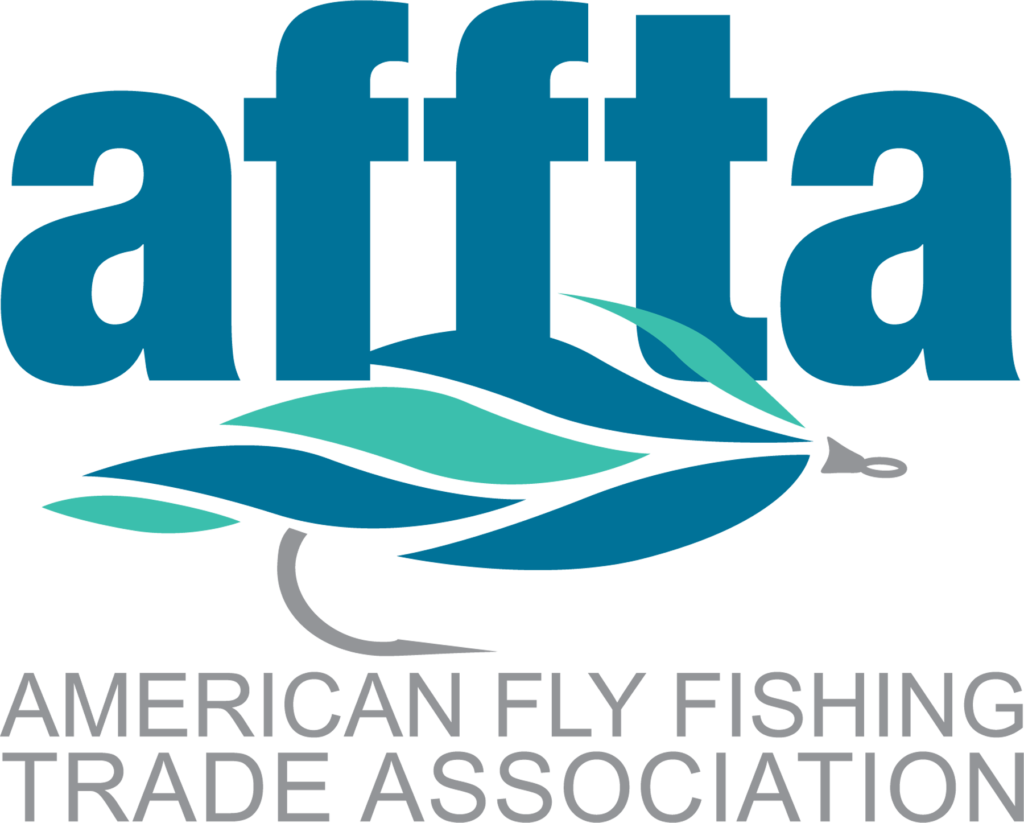All of This Public Water is at Risk
Already fired up? Good. The best thing you can do right now is call your senators and respectfully explain why this matters to you. Contact them today at (202) 224-3121. Don’t know who they are? Want to understand what’s going on? Keep reading. At onWater, we build tools that make it easier for people to access the water, but we know maps alone aren’t enough. Public access to fish, paddle, and recreate depends on something more profound: the promise that public lands and waters stay in public hands. That promise is now under an IMMEDIATE threat. Three million acres is hard to picture until you realize it’s nearly the size of Connecticut. Now imagine Connecticut lifted off the map, chopped into parcels, and listed on a government auction site. These aren’t abandoned industrial sites or fringe scrublands. They’re prime slices of our shared natural infrastructure. These are the natural filters, buffers, and cooling systems that protect our rivers and lakes. They are also home to wild meadows, high-elevation forests, critical tributaries, and essential access corridors. This is land that frames some of the most iconic rivers and recreation destinations in the country. Lose the land, and we risk losing the forest canopy that cools streams, the access trails that lead to headwater creeks, and the very ground that filters the water before it ever hits a riverbed. 1,487,851 hectares (lakes) at risk 202,979 miles of river at risk 15,564 rivers at risk That’s the big picture. Zoom in, and you’ll find river and lake access points that have served the public for generations. Maybe it’s the pullout you’ve used for years. Perhaps it’s the shady bend where your kid caught their first fish. Now, imagine a FOR SALE sign standing between you and the water. Your Waterways Will Be Affected. Even If You Don’t Know It Yet. The actual danger of this proposal lies in its stealthy nature. No map says, “Your favorite trail will be sold.” No meeting that announces “this ramp you launch from every June is gone.” However, an analysis of the affected parcels reveals just how close to home this is. These lands are not isolated. They are part of the recreation corridors that connect the West. And even if a sale does not cut off a trail or access point directly, the water that flows through these parcels continues to move. It continues downstream into the rivers, reservoirs, and communities we all rely on. Anything that happens upstream, whether it is roadbuilding, clearcutting, drilling, or grazing, ends up in the places we fish, paddle, and drink from. WASHINGTON 37,538 hectares (lakes) affected 10,677 miles of river affected 1,707 rivers in danger OREGON 94,380 hectares of lakes affected 30,506 miles of rivers impacted 3,876 rivers at risk CALIFORNIA 262,162 hectares (lakes) affected 24,261 miles of river affected 2,859 rivers in danger IDAHO 148,581 hectares (lakes) affected 31,930 miles of river affected 3,891 rivers in danger NEVADA 118,341 hectares (lakes) affected 16,989 miles of river affected 1,420 rivers in danger ARIZONA 28,131 hectares (lakes) affected 12,728 miles of river affected 1,060 rivers in danger NEW MEXICO 7,612 hectares (lakes) affected 9,862 miles of river affected 877 rivers in danger UTAH 479,323 hectares (lakes) affected 13,505 miles of river affected 1,310 rivers in danger COLORADO 29,923 hectares (lakes) affected 25,201 miles of river affected 2,754 rivers in danger WYOMING 55,150 hectares (lakes) affected 27,602 miles of river affected 2,222 rivers in danger Looking closer: • In Oregon, parcels intersect roads that lead to popular Deschutes River boat launches. • In Colorado, eligible lands border the upper Gunnison basin and public trails used by anglers and hikers. • In Idaho, tracts include land along the Lemhi and Pahsimeroi Rivers, which are key spawning grounds for salmon. • In California, some parcels sit next to Lake Tahoe National Forest lands that anchor trail systems and access points. These are backyard recreation spots for some and bucket-list destinations for others. They are not remote wilderness outposts. They are the lands that quietly support everything we do outside, from family fishing trips to overnight rafting adventures. When public land is handed over to private interests, access is lost, infrastructure deteriorates, and ecological protections are compromised. And too often, the public does not realize what was lost until it is gone. A False Bargain: Billions Lost, Not Gained Proponents of the proposal argue that selling off land will help reduce the federal deficit or generate funding for housing development. But these claims fall apart under scrutiny. According to independent estimates, the total revenue expected from this three-million-acre sale is at most $ 10 billion over ten years. Compare that to what public lands and clean water already generate according to the Outdoor Industry Association: ● The U.S. outdoor recreation economy contributes $1.2 trillion annually. ● It supports over 5 million jobs across the country ● The Colorado River Basin alone sustains 1.4 trillion dollars in economic output and 16 million jobs across multiple states Much of that value starts with clean, accessible water. Whether it’s fishing licenses, rafting permits, or brewery tourism tied to river corridors, water is an economic engine. A one time revenue injection of 10 billion dollars is a rounding error compared to the recurring value these lands already create in outdoor spending, in water supply, and in ecosystem services. This isn’t fiscal responsibility. It’s a short-sighted liquidation of national assets for pennies on the dollar. Where onWater Stands At onWater, we didn’t build apps to show people where to fish and paddle. We built a platform to help people understand, access, and protect the waters that define their lives. Our commitment to Fishing and Paddling Access for All is not a tagline. It’s a principle built into every layer of our platform. Whether you’re dropping a pin on a remote walk-in stretch of the Gunnison, scouting legal put-ins on the Yakima, or checking streamflows before floating the Madison, you’re engaging with tools that depend on one critical truth: those places remain public. We’ve mapped hundreds of thousands of boat ramps, trailheads, easements, and stream gauges, and many of them are now directly tied to parcels that are marked for potential sale. These aren’t abstract points of interest. They’re generational touchstones. They’re where a dad taught his daughter to cast. Where friends paddle until sundown. Where a family finds solace in cold, clear water after a challenging year. We do not accept the idea that conservation and recreation are negotiable. We do not believe that public access should be sacrificed for private speculation. We do not take lightly the erosion of trust that occurs when public assets are traded away without transparency or accountability. This is why onWater is speaking out. Not because it’s political. But because it’s personal. Our business depends on these places. But more importantly, our community’s joy, safety, and legacy depend on them too. So we’re doing what we ask our users to do every day: stand up for access, for clean water, and for the right to explore the wild. We will continue to build tools that serve this mission. But no tool is powerful enough to replace lost land and water. No map is detailed enough to recreate a place once it’s gone. How You Can Help (In 60 Seconds or Less) This fight is winnable. A similar land sell-off provision in the House was defeated earlier this year because people spoke out. We can do it again. Here’s how: Step 1: Contact Your Senators FIND YOUR SENATOR www.senate.gov/senators/senators-contac… CALL YOUR SENATOR (202) 224-3121 Step 2: Tell Everyone Most Americans are unaware of the actual mass of the land grab—share maps on social media. Text them to your family. Tell random strangers on the street. This affects us all. ____________________________________________________________________________ Alex Maier, CMO/CPO onWater alex@onwaterapp.com
All of This Public Water is at Risk
We do not take lightly the erosion of trust that comes when public assets are traded away

Images


